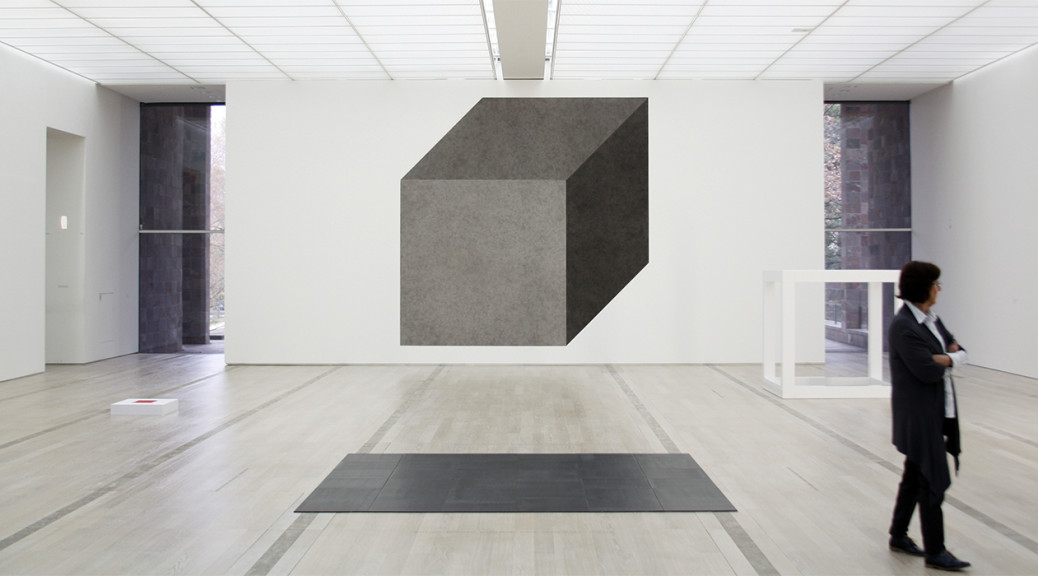Three groundbreaking works of New Art from the Raussmüller Collection are on view at Fondation Beyeler in Basel/Riehen until January 10th, 2016. After having been displayed at the Hallen für Neue Kunst in Schaffhausen until 2014, visitors can now experience the works in a new environment.
The Wall Drawing #354/A by Sol LeWitt has been executed as a solitaire at Fondation Beyeler and is the clear vanishing point of the space dedicated to so called Minimal Art.
Carl Andres 8004 Mönchengladbach Square is composed of 36 steel plates and was created for his first museum exhibition in Europe, 1968 at the Städtisches Museum Mönchengladbach. Together with five other works of this exhibition it forms the first group of works in which Carl Andre used steel plates.
The third work, “monument” 1 for V. Tatlin by Dan Flavin, is the starting point of a series dedicated to the Russian artist Vladimir Tatlin. Over the course of 26 years, 49 additional “monuments” emerged from the first one, variations and permutations in which Flavin experimented on his first idea.Drei wegweisende Werke der Neuen Kunst aus der Raussmüller Collection sind bis zum 10. Januar 2016 in der Fondation Beyeler in Basel/Riehen zu sehen. Besucher haben die Möglichkeit, die drei Werke, die bis 2014 in den Hallen für Neue Kunst in Schaffhausen zu sehen waren, nun in einem neuen Umfeld zu erfahren.
Das Wall Drawing #354/A von Sol LeWitt ist als Solitär in der Fondation Beyeler ausgeführt und formt den deutlichen Fluchtpunkt des der sogenannten Minimal Art gewidmeten Saals in der Fondation Beyeler.
Carl Andres 8004 Mönchengladbach Square besteht aus 36 Stahlplatten und entstand für seine erste Museumsausstellung in Europa, 1968 im Städtischen Museum Mönchengladbach. Zusammen mit fünf anderen Arbeiten dieser Ausstellung bildet es die erste Werkgruppe, in der Carl Andre Stahlplatten verwendete.
Das dritte Werk, “monument” 1 for V. Tatlin von Dan Flavin, ist der Ausgangspunkt einer Serie, die dem russischen Künstler Vladimir Tatlin gewidmet ist. Davon ausgehend entstanden über 26 Jahre hinweg 49 weitere “Monumente”, in denen Flavin mit Variationen und Permutationen seiner ersten Idee experimentierte.
